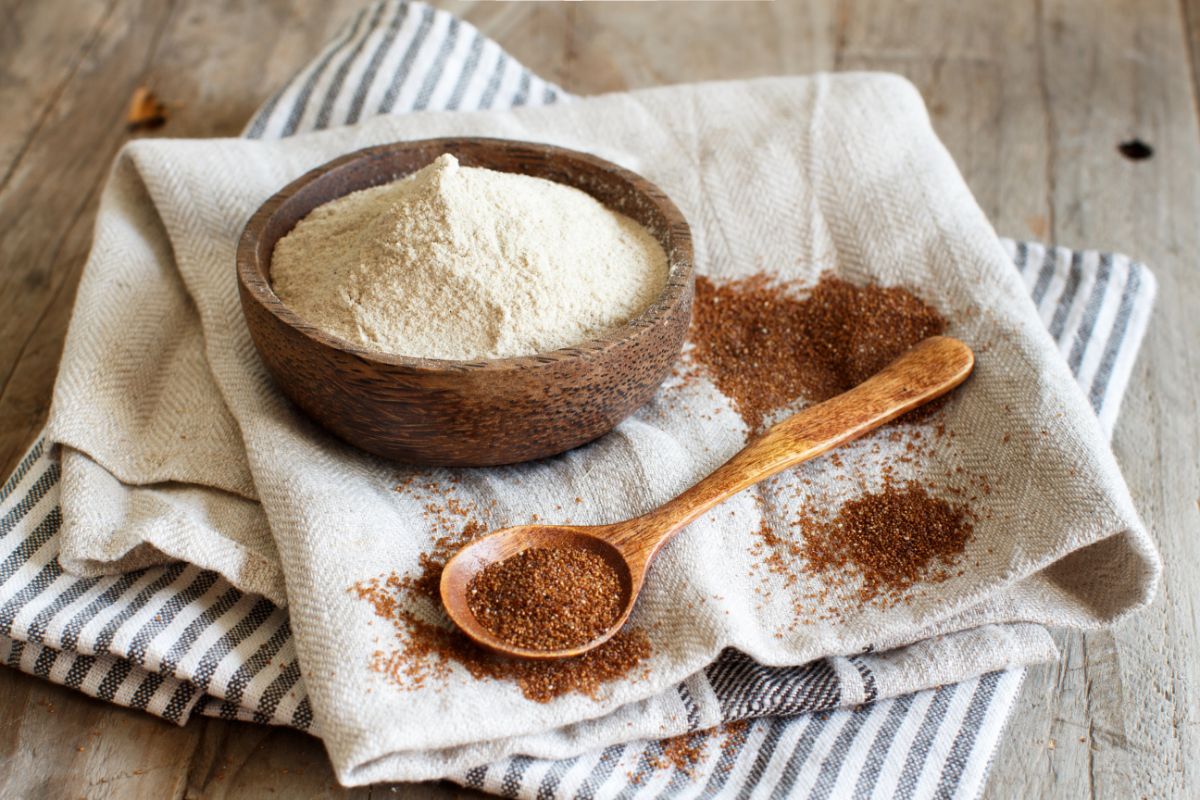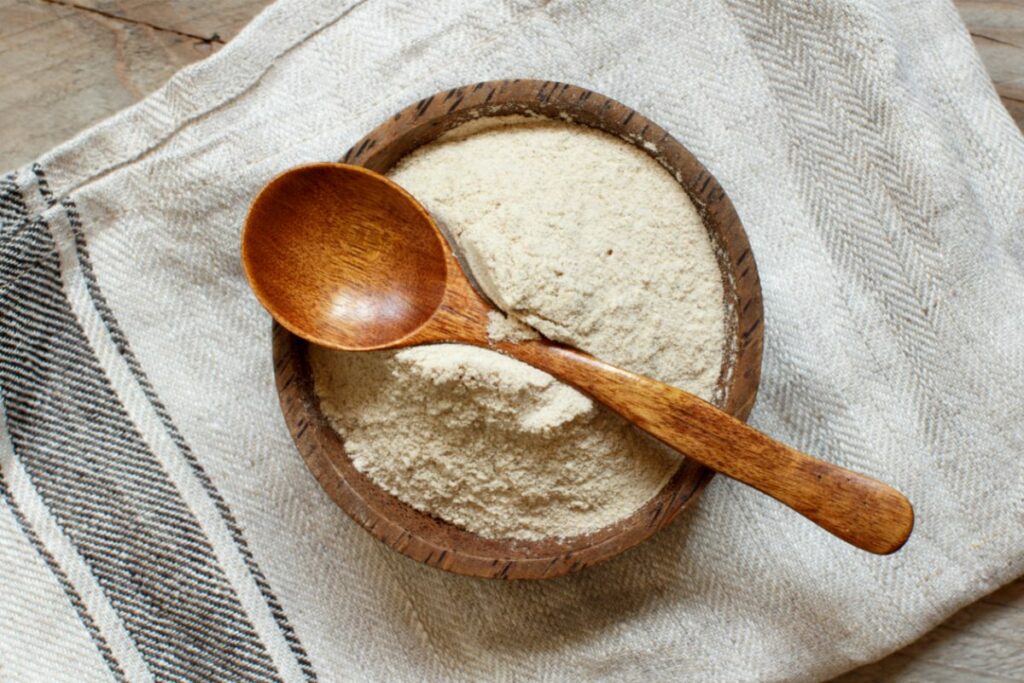When you see the product ‘teff’ you may be surprised to find out it is actually seeds and not grains.

Technically teff is known as a ‘pseudocereal’, which means that it can be treated as a grain.
The teff seeds (just commonly called teff) come from the annual grass Eragrostis tef. It is a species of lovegrass which is native to the Horn of Africa, where modern day Ethiopia and Eritrea are.
The teff grass is commonly used as feed for livestock whereas the seeds are cultivated for human consumption.
The seeds are incredibly small, only being about 1mm in size, or roughly the same size as a poppy seed.
Teff has become the staple grain of Ethiopia and Eritrea, in Ethiopia it produces about two thirds of their daily protein intake.
It is known for its mild nutty flavor which works well with Ethiopian spices.
Teff seeds can come in a variety of colors, from white to red to a dark brown. The lighter the color of teff, the more popular it is for its flavor.
History
Teff is one of the earliest known plants to have been domesticated. These origins can be traced back to between 4000 BC to 1000 BC.
Due to its resistant nature, teff has survived through multiple droughts throughout history.
This factor is one of the reasons that it has such high importance in Ethiopian cuisine.
Modern Usage
Many Americans may be mistaken into believing that teff is a relatively new product.
This is because it didn’t make it way over until the 1980s-1990s, when a spike of Ethiopian immigrants came to the US.
As more people are becoming gluten sensitive, replacement grains are being sought out all over the globe.
Teff being one of them. Unfortunately, teff is a low yield crop when compared to other grains, so it is still relatively expensive to export.
This hasn’t stopped it from being popular amongst athletes. Many runners praise teff for its high nutritious value and versatility.
Health Benefits
Where teff really shines is with its calcium content. 3.5oz (100g) of cooked teff offers about 49mg of calcium, this can be compared to the same amount of cooked quinoa only providing 17mg.
Teff is also high in iron, protein, and fiber. Being gluten free, teff is gut friendly and especially good for people with celiac disease.
Unlike other grains, teff contains lysine. This amino acid can’t be produced naturally in the human body, but is essential to its function.
Lysine lowers cholesterol and helps the body convert food into energy.
However, teff does contain phytic acid. Phytic acid binds nutrients together to stop the body from absorbing them. Fermenting teff can help reduce the levels of phytic acid in it.
How To Cook It
Similar to cooking millet or quinoa, you can boil teff and then allow it to absorb the liquid at a lower temperature.
However, because of its small size, it takes about half as long to cook.
You can cook teff in plain water, or in a broth of your choice to add flavor. Based on how much water you boil it in, you can get different textures.

For a typical grain texture you would usually do a 1:1 ratio of liquid to teff. You can however do a 3:1 ratio of water to teff to get a porridge-like consistency.
Regular grain teff works well with meat and vegetables, basically anything you would typically serve with rice.
Whereas teff porridge can be served sweet with honey, fruits and cinnamon.
Teff is very versatile and due to its mild flavor you can pair it with pretty much anything you want.
Teff Flour
Teff flour is a great way to add extra nutrients into a dish. All you need to do is replace about a quarter of the required flour with teff flour to get a nutty taste without losing any consistency.
Due to teffs gluten free nature, teff flour can be used as a part of a gluten free flour blend in order to make a variety of baked goods.
Muffins, cookies and pancakes are popular choices for teff flour.
Of course you need to remember that teff is gluten free so you will need to use some form of binding agents like xanthan gum in order to get the right texture.
Injera
It is impossible to talk about teff and not mention injera.
Injera is one of the staple foods of Ethiopia and is equivalent to the role rice and bread play everywhere else.
Made from just teff flour and water, injera is a traditional sourdough flatbread that is eaten pretty much daily by the Ethiopian people. It looks a bit like a pancake and has a spongy texture.
Not only is it a delicious part of a meal, it is also used as an eating utensil. A typical meal of stew or salad will be served on injera.
Pieces would be ripped off and used to eat the stew or salad, and when that is gone then the injera would be eaten by itself after absorbing the juice. It’s a spoon and a plate all in one!
Storing
Like all grains, it is best to store teff in an airtight container, kept in a cool dark place.
Teff flour is best to be kept in the refrigerator or the freezer. It can be kept for about a year in the freezer.
When teff grows off it starts to emit a bad aroma. When this happens then you need to toss it out and buy a fresh bag.
Conclusion
Teff seeds are celebrated for its nutritional value, as well as its gluten free benefits.
Boasting a rich history and providing an entire country with protein is no small feat, but this small seed has done it.








